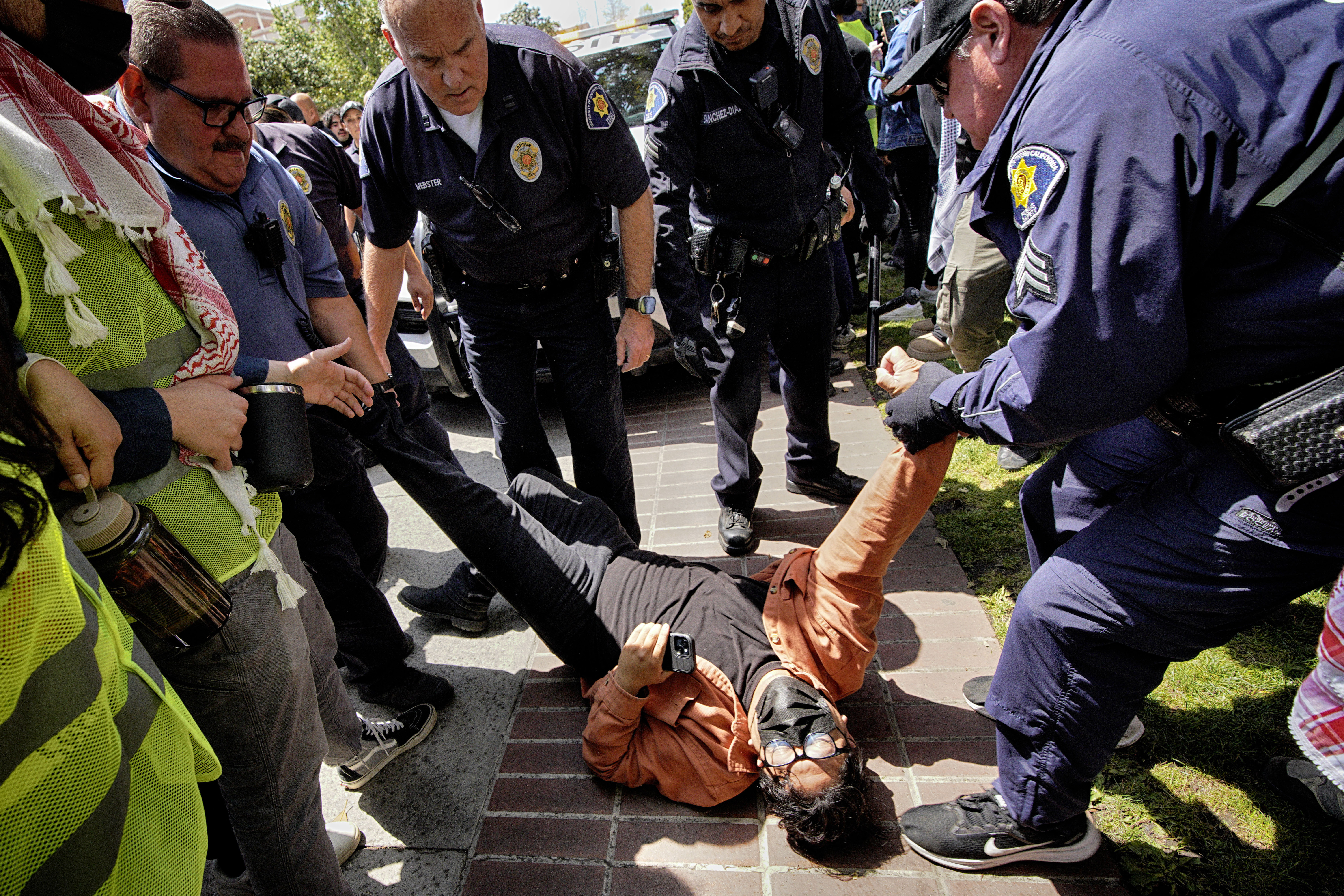| By Katharine Mieszkowski and Matt Smith |
| Center for Investigative Reporting |
| Publish date: Sept. 16, 2013 |
If U.S. Air Force official Steve Mayer is bothered by California’s refusal to inherit the radioactive waste dump he’s building outside Sacramento, he doesn’t show it.
He’s plowing ahead with plans at the old McClellan Air Force Base to entomb soil contaminated with radium-226, a glow-in-the-dark substance that can cause cancer, and pass ownership of it to the city of Sacramento.
The California Department of Public Health has made it clear that state laws don’t permit the move. Even if they did, Sacramento’s city manager says he wants nothing to do with the dump.
But Mayer’s playing the long game. By 2019, when the military wants to hand over the arena-sized dump to the city, he’s hoping he won’t have to deal with the current crop of state regulators and city officials balking at his plans.
“There will be a different governor then, too, and (regulators) all work for the governor,” said Mayer, the Air Force’s remediation program manager for McClellan.
Mayer’s attitude about state and local officials, and his insistence that the Air Force can bulldoze ahead despite the state’s strict environmental laws, highlights an escalating clash between military officials and local communities over the plight of former bases now being converted for civilian use.
In a case that could affect bases around the state, the Air Force is burying radioactive waste on the site it supposedly is cleaning up, bypassing state environmental regulations because it is on federal land. The state regulators aren’t warning of a health risk to the surrounding neighborhood. But by pushing through the unwanted dump, the Air Force might create a precedent for other places where military agencies wish to avoid costly out-of-state hauling fees.
California
At McClellan, Mayer said the objections won’t stand in the military's way.
“They have their right to their opinion, and we have ours,” Mayer said. “We’ll continue to go forward with our plans.”
There are seven Cold War-era facilities in California where radioactive waste has been an ongoing concern. At the former Hunters Point and Treasure Island bases in San Francisco, for example, the Navy has fought with regulators for years over the military’s obligations to remove radioactive soil in preparation for civilian development.
Just northeast of Sacramento, the former McClellan Air Force Base is now an industrial hub with an airport.
The federal government closed McClellan in 2001 as it shrunk the military’s footprint post-Cold War. As the military does with other shuttered bases, it is passing McClellan to local hands for redevelopment. But officials need to find a home for contaminated soil at the facility to finish the job.
On the base, half a dozen giant piles of dirt sit behind a chain-link fence, hidden under black tarps. A sign on the fence reads: “Caution radioactive materials.”
For years, the Air Force has tried to make this dirt somebody else’s problem.
The Air Force in 2011 tried to argue that waste of the type at McClellan could be buried in California. The office of Gov. Jerry Brown rejected that legal argument.
Since then, it got Idaho, which has weaker standards than California on radioactive waste, to accept about 43,000 tons of soil.
Now, the Air Force is moving forward with its latest plan to simply build its own permanent home for the contaminated dirt right on the former base.
It’s estimated the dump, which can hold 360,000 cubic yards of soil, will cost the Air Force $20 million. If it were forced to dispose of the dirt out of state, the cost would be between $125 million and $200 million, according to the Air Force.
The Sacramento Fire Department has operated a training facility on the base next to the landfill site. Once the dump is completed, the Air Force hopes to transfer it and the training facility to the city of Sacramento.
The landfill will be just blocks from residential neighborhoods, but state health regulators say it will not pose a health risk to nearby residents.
Sacramento wants the land to train firefighters, but not the dump. City Manager John Shirey said the dump’s inclusion is a deal breaker.
“The United States government just has to accept that it didn’t take very good care of a lot of land on a lot of military bases and will have to be responsible for cleaning it up,” he said.
The California Department of Public Health, which administers the state’s Radiation Control Law, has the authority to block the transfer of the landfill into civilian hands by refusing to issue a license or exemption to a new owner.
In a statement, the department told The Center for Investigative Reporting that the radioactive waste dump will make it impossible to transfer the land to the city.
But state policy does not apply to land in military facilities such as McClellan as long as it remains in the Air Force’s hands, state regulators say. State authority begins once attempts are made to move the land to local control.
The dump “would need to remain under federal ownership and control for as long as radioactive material is stored there,” said Ronald Owens, a spokesman for the California Department of Public Health.
Mayer, however, said the state regulators’ objections would not change plans to transfer the land in 2019. He contends that the decision to pour radioactive waste from various spots around the base into a single on-site dump will save taxpayers tens of millions of dollars over shipping it to another state. He said the dump would be safe, a position backed by federal environmental officials.
But California health regulations require that radium-contaminated soil such as McClellan’s be disposed of only in facilities certified to hold that type of material. None exists in California.
“Now, instead of cleaning up, we’re saying, ‘OK, let’s call it federal and leave it here,’ ” said Daniel Hirsch, a lecturer on nuclear policy at UC Santa Cruz who leads the environmental group Committee to Bridge the Gap.
Decontaminating McClellan has not been easy. Cleanup operations at one point stirred up waste in the bed of a creek that flowed off base to a housing tract. Groundwater contamination was found to be so extensive that it required an operation with wells annually pumping 1,000 pounds of old industrial solvents.
Opened in the 1930s, McClellan was a large industrial maintenance depot for the Air Force, where radioactive materials were used and studied. In a classified program during the Cold War, airplanes flew from the base into nuclear test fallout to gather samples of the radioactive isotopes released by the blasts.
In the 1930s and ’40s, the military used radium-laced paint on aircraft instruments to make them glow in the dark to help pilots see them at night. Cleanup water or solvents used to wipe down equipment or mop up radium spills may be responsible for the tons of contaminated soil at the base.
For decades, much of the radium-contaminated soil, which the Air Force itself has deemed “highly toxic,” lived in industrial landfills on the base in North Highlands, which is part of Sacramento County.
At McClellan, already about two-thirds of the 3,000 acres has been handed out of federal control for industrial and commercial uses.
Now, after decades of careless use of radioactive material, the Air Force might be left with the mess. Mayer acknowledged that the Air Force could end up stuck with the dump. When asked if that would undermine the congressional mandate to repurpose the entire base for civilian use, he conceded it did.
“Yes,” he said. “Our mandate is to transfer the property.”
This story was edited by Andrew Donohue and Robert Salladay. It was copy edited by Nikki Frick and Christine Lee.
The independent, nonprofit Center for Investigative Reporting is the country’s largest investigative reporting team. For more, visit www.cironline.org. The reporters can be reached at kmieszkowski@cironline.org and msmith@cironline.org.



